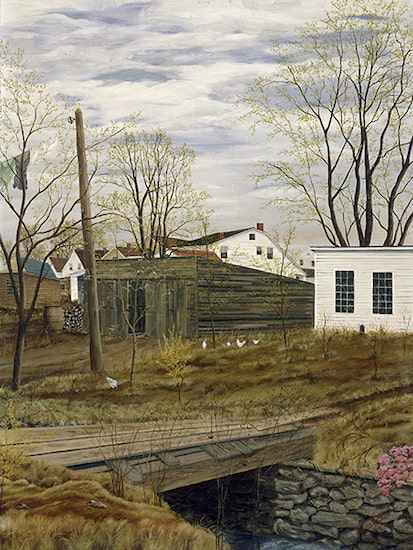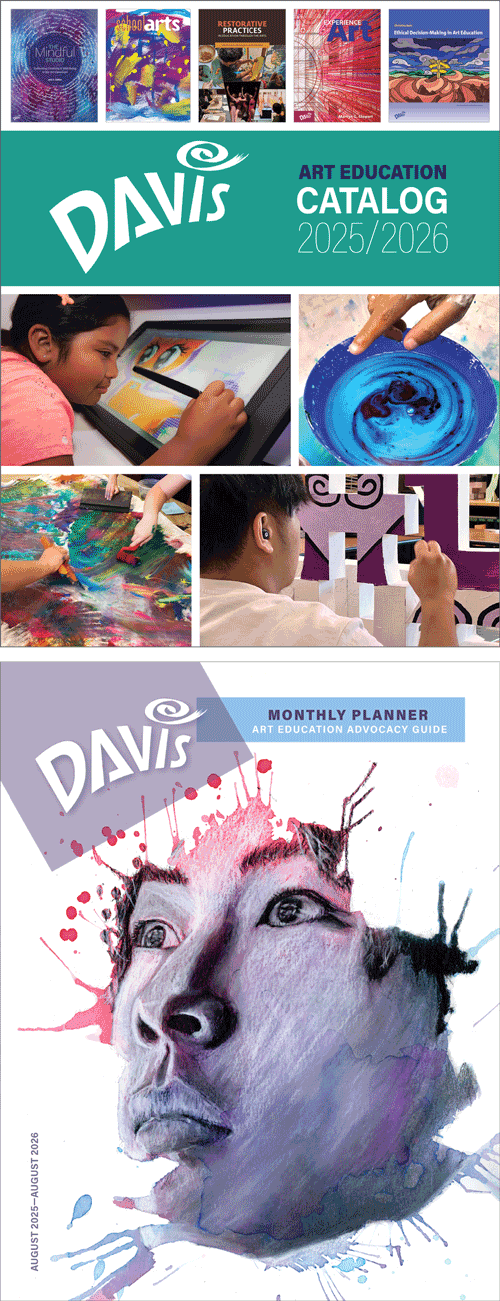Gem of the Month: Pasquale Santo
I had a sudden “beauty attack” last week when I looked closely at this artist’s work for the first time. Being a painter myself, I am always flabbergasted by how many artists come and go, and how lucky any of us are to have an impact, i.e., have people see and appreciate our work. Therefore, here’s a tribute to an artist I would like everyone to get to know, Pasquale “Patsy” Santo.
 |
| Pasquale Santo (1893–1975, United States, born Italy), Spring, 1940. Oil on canvas, 24 ⅛" x 18 ⅛" (61.3 x 46 cm). The Museum of Modern Art, New York. © 2025 Artist or Estate of Artist. (MOMA-P2354) |
Santo, who did not own a car, mostly painted locations in Bennington, Vermont, outdoors with his easel. His views of Bennington are typified by close attention to minute detail such as those seen in the stones of the creek wall in Spring. Santo had an obvious dedication to painting scenes near his home with a quiet dignity. His grasp of perspective is truly remarkable for a self-taught artist, while his muted palette of earth tones is reminiscent of the work of fellow New England realist Andrew Wyeth (1917–2009). Unlike Wyeth’s Maine subjects, Santo’s views of Bennington seldom contain narrative content or allegory; they are merely views of his home. His views often contrast his highly detailed foreground elements with a swath of painterly, brilliantly colored sky—a muted violet in Spring.
An interest in acutely observed realism has been an important element in American painting since colonial times. Originally, American realism was influenced by the nuances of Neoclassicism or Romanticism in British, French, and other European painting. American artists during the 1800s established a strong realist aesthetic that was based on an unwavering veracity to visual fact. Santo combined the Italian Renaissance instinct for painting grounded in the physical world with an unerring sense of composition that demonstrated the American—particularly in the Northeast—penchant for pride of place, no matter how unexceptional or humble.
Born in Corsano, Italy, Santo moved to the United States in 1913. For a few years, he was a day laborer in a variety of jobs throughout the Northeast. In 1917, he married an American woman, and they settled in Bennington. Santo chose house painting as a career but taught himself painting with oils. He painted some murals and small works that were given to family and friends as gifts.
In 1937, Santo publicly exhibited his work for the first time at the State Fair in Rutland, Vermont. His work attracted the attention of Social Realist American painter Walt Kuhn (1877–1949). Although a great supporter of the introduction of modernism into American art, Kuhn was primarily a realist painter of people. Recognizing Santo's amazing talent, he encouraged Santo to pursue art as a career and advocated for Santo at galleries in New York.
Kuhn prevailed upon gallery owner Sidney Janis (1896–1989) to include Santo in the 1939 exhibition Contemporary Unknown American Artists at the Museum of Modern Art. He also helped Santo get his first one-person show in New York in 1940 at the Harriman Gallery. Santo had a number of successful exhibitions in New York, which led to his inclusion in MoMA's 1943 exhibition American Realists and Magic Realists. Janis included Santo's work in his book, They Taught Themselves (1942).
View more work by Santo in the collection of the Bennington Museum.
Correlations to Davis programs: Explorations in Art 2E Kindergarten: 10.1, 10.2; Explorations in Art 2E Grade 1: 1.1, 1.3, 2.8, 2.9, 5.1, 5.3; Explorations in Art 2E Grade 2: 6.1, 6.4, 6.6; Explorations in Art 2E Grade 3: 4.1, 4.2, 4.3; Explorations in Art 2E Grade 4: 1.6, 39; Explorations in Art 2E Grade 5: 2.7, 2.8; Explorations in Art 2E Grade 6: 4.1, 4.2, 6.4; Experience Art: 5.1, 5.2; A Community Connection 2E: 4.1; A Global Pursuit 2E: 6.1; A Personal Journey 2E: 8.1; Discovering Drawing 3E: Chapter 5

Comments